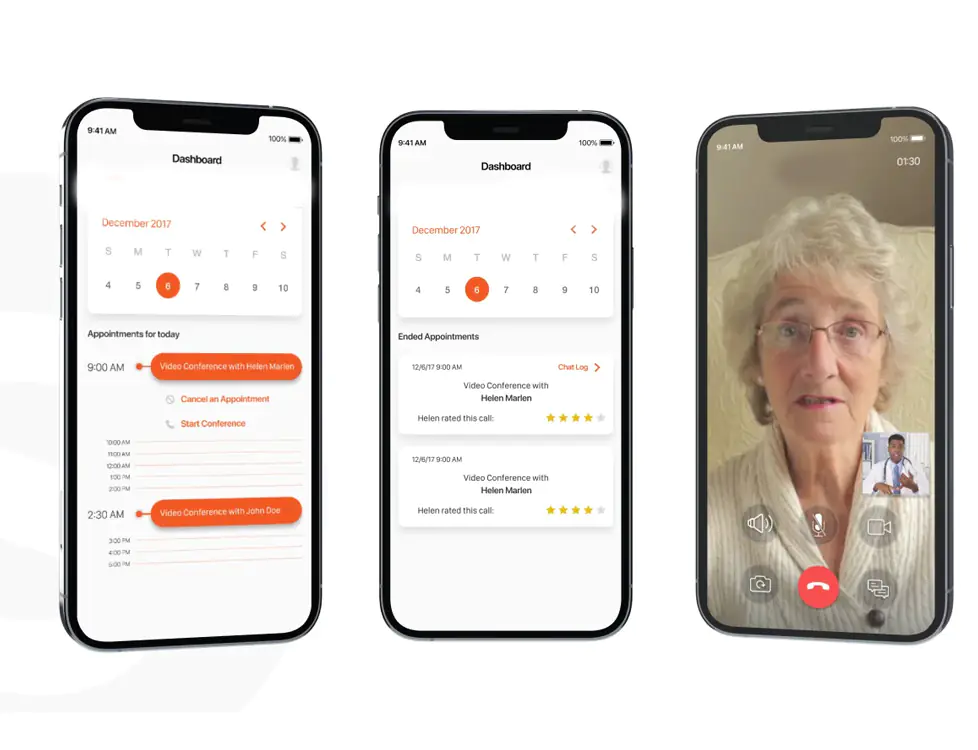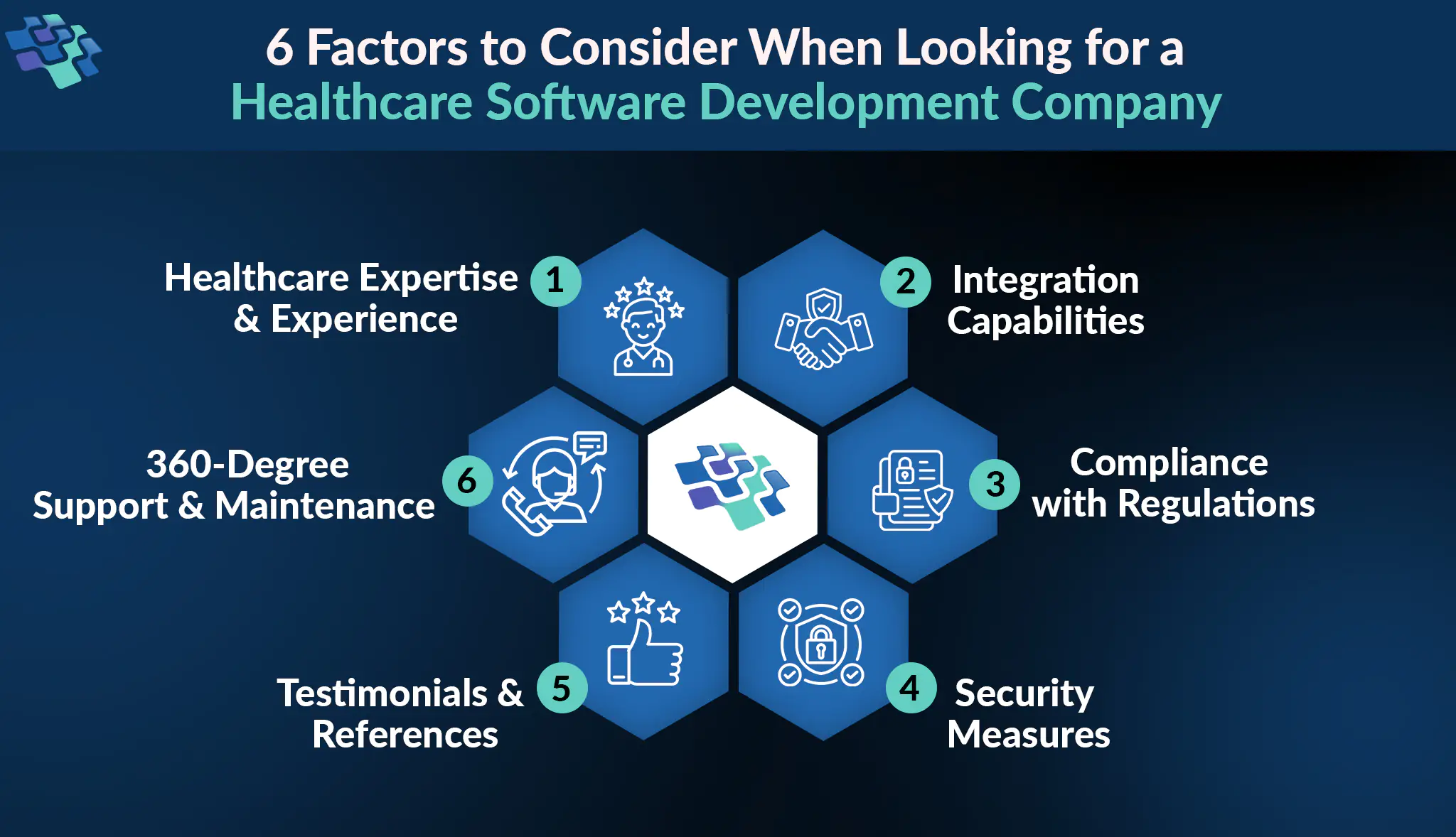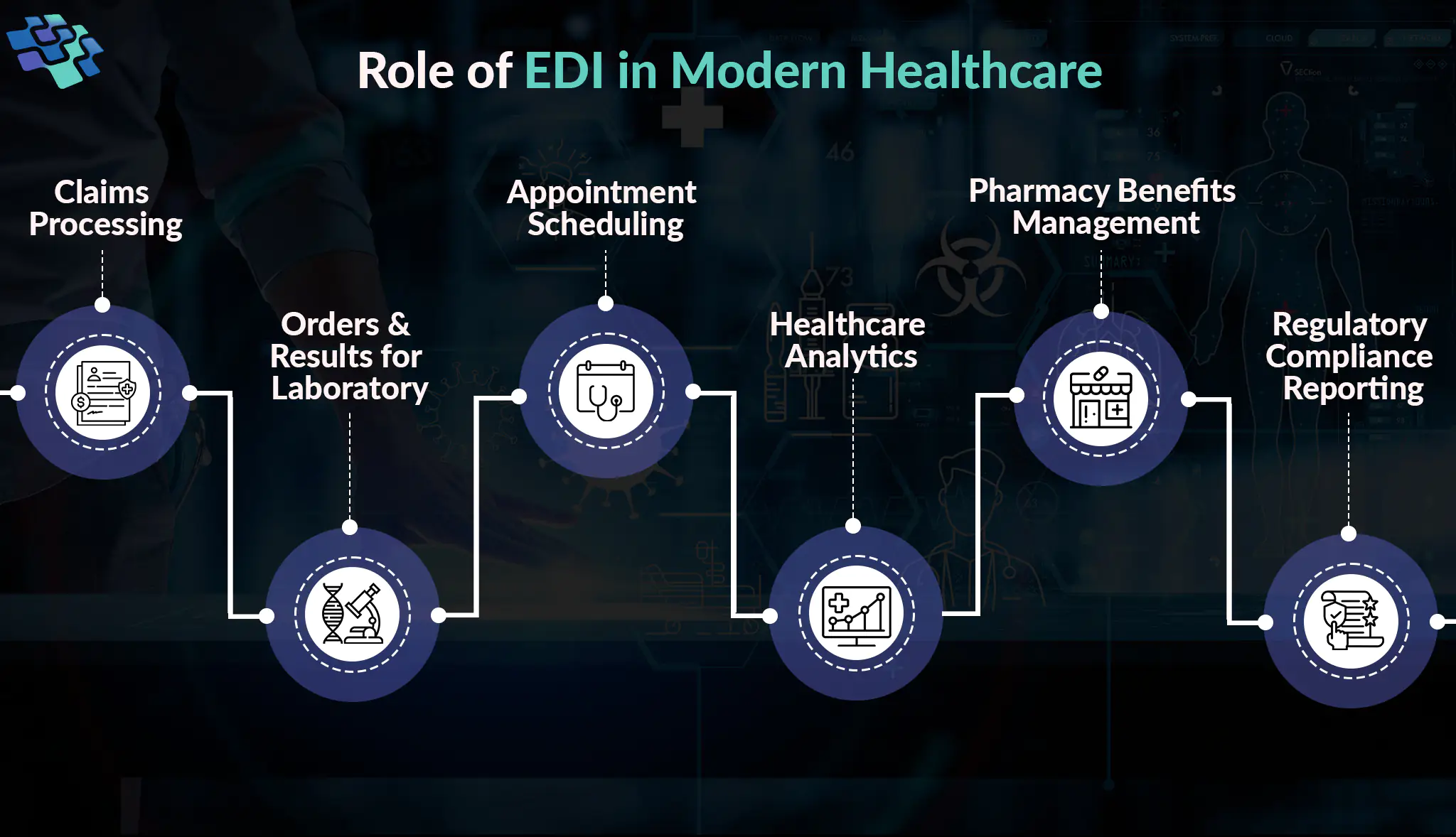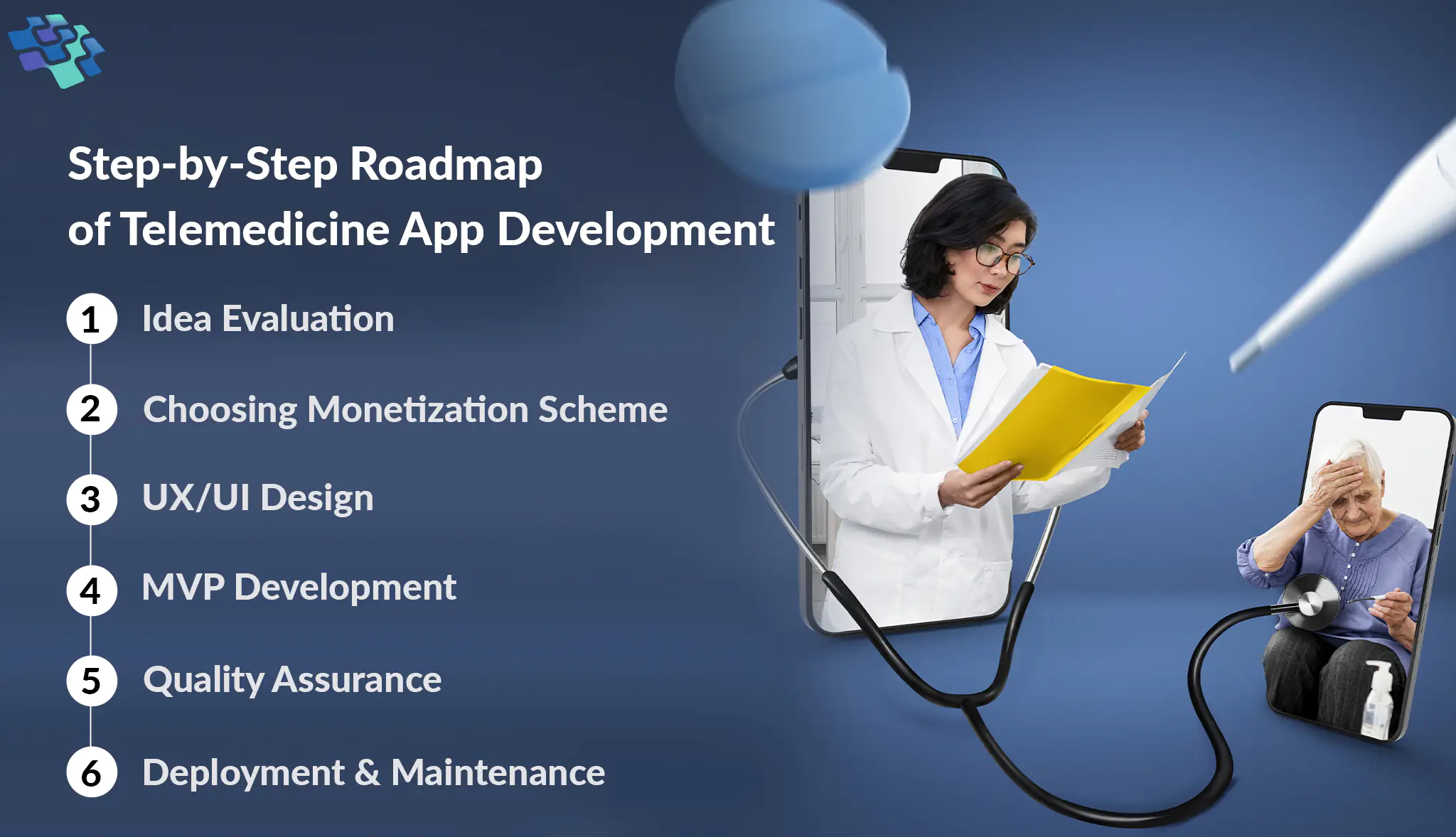Everything Businesses Need to Know About Telemedicine App Development
The advent of telemedicine apps is changing our perception of a typical doctor’s visit and expanding the bounds of healthcare by allowing patients, even in remote places, to consult with their doctors from the comfort of their homes without having to physically travel or wait in a waiting room. We’ll go over everything businesses need to know for telemedicine application development in this guide.

Optimize Patient Care: Leverage Advanced Analytics & Real-Time Data Insights Now!

“Currently, 76% of U.S. hospitals connect with patients and consulting practitioners at a distance using video and other technology. Every state Medicaid program has some form of coverage for telehealth services, and private payers are embracing coverage for many telehealth services.”- American Hospital Association
Telemedicine App Development Solutions Overview
Envision a world in which an individual can do a self-health examination, take blood pressure, and submit the results to the doctor via remote access. The doctor will then determine what medications he requires and whether he needs to visit the hospital for additional testing. By top telemedicine app developers, healthcare firms are attempting to bring it to pass. The main goal of telemedicine is to enable universal access to cheap healthcare services by utilizing technology to support traditional healthcare.
The following are the main medical services offered by custom telemedicine app development solutions:
- Examine and handle minor medical issues
- Requesting or extending prescriptions for drugs
- Video conferences and online chats with physicians
- Obtain counseling and further mental health services
The goal of telemedicine is not to replace in-person visits to clinics or hospitals. Rather, it provides remote healthcare in times of emergency and supplements traditional healthcare. With the aid of telemedicine app development services, healthcare practitioners and institutions can create incredibly useful and intuitive mobile applications that allow them to provide patients with a range of healthcare services. Developing specialized programs that enable remote communication and health status monitoring between physicians and patients is the fundamental concept underlying the creation of telemedicine apps. These advanced mobile apps minimize paperwork and provide constant, direct access to clinical details.
Why Do Telemedicine Apps Have Such High Popularity?
Telemedicine applications are becoming increasingly popular due to the growing use of mobile apps for healthcare services. According to a survey, the global telemedicine industry is expected to rise at a CAGR of 24.7%, from its $45.5 billion 2020 estimation to $175.5 billion by 2026. Because more people are looking for ways to receive treatment without leaving their homes, the COVID-19 outbreak has raised the need for telemedicine. Telemedicine apps are more economical and convenient since they allow users to get medical care while lounging in their own homes.
- Patients can also skip lengthy clinic wait periods with telemedicine apps, which can be inconvenient and time-consuming.
- Patients who reside in isolated or rural locations, where access to medical services may be restricted, can benefit more from telemedicine application software development.
Through wearable technology or sensors to gather information on patients’ vital signs, telemedicine app development solutions also enable clinicians to remotely monitor patients. Personalized medical advice and treatment recommendations can then be made using this data. Patients with chronic disorders benefit most from remote patient monitoring since it enables physicians to keep an eye on their condition and, if needed, promptly administer medical care.
Why is a Telemedicine App Even Necessary?
Even if the global pandemic is over, its effects are still evident in the increased awareness of social alienation and distant access among people. From now on, healthcare organizations are working to make the patient’s experience as good as it can be for the digital generation. To communicate with patients, practitioners, and providers of healthcare want digitally focused products. The market value of EHRs is expected to increase from $29 billion in 2020 to 47.2 billion dollars by 2027, according to Statista. The most difficult aspects of switching to the new solution and services were likewise tight rules and reimbursement guidelines.
However, once COVID-19 struck and these limitations were swiftly abolished, things drastically changed. Regulatory agencies have pushed enterprise healthcare providers to step up rapidly to meet the provider’s requirement to continue seeing patients while physical clinics were closed.
The Benefits of Developing a Telemedicine Platform for Physicians and Patients
Telemedicine app development has the potential to completely transform the healthcare industry and provide a means of promoting a more connected and healthy global community. Everyone gains when healthcare is provided via telemedicine apps: physicians may efficiently manage their time while patients have free access to medical treatment. Here’s how telemedicine apps enhance the performance of medical enterprises.
- Schedule Optimization: 20% of doctors, according to industry estimates, put in 60–80 hours a week. Furthermore, 15% of medical professionals acknowledge that they are prone to depression, which lowers their ability to function. Telemedicine app development can also aid with workload distribution and time management.
- Data Centralization & Monitoring: Telemedicine apps feature a database and monitoring system, where all patient health data is stored in an electronic health record (EHR) format. Having access to an EHR lowers the chance of medical errors and increases treatment efficiency.
- Enhancing Patient Care & Outcomes: Worldwide, patients can look for medical professionals. When a patient needs treatment immediately and there are no available specialists in their place of residence, telemedicine services can be helpful.
- Scheduled Health Monitoring & Examinations: Following hospitalization, about 65% of patients are under remote monitoring, and 35% are required to have yearly exams. Telemedicine reduces the need to make clinic appointments and stand in line.
Step-by-Step Roadmap of Telemedicine App Development
Telemedicine app development for hospitals and clinics is a drawn-out, costly, and complicated process. Still, your app will be well worth the investment if you have a solid team and do the necessary preparation. We at NextGen Invent have developed a plan for producing such solutions and have completed several successful telemedicine app development projects.
 1. Idea Evaluation
1. Idea Evaluation
Make sure your idea is viable before investing time and resources in a product that no one will purchase. It requires that you determine the problem that your solution will address,
- Carry out a comprehensive preliminary business analysis,
- Assess the level of demand for the future app,
- Identify the target market and buyer persona,
- Investigate the market and competitors in the niche, and
- Formulate the distinctive selling point of your telemedicine solution
In addition, to make sure your app conforms with all applicable laws, you should carefully review the telemedicine legislation.
2. Choosing Monetization Scheme
Starting to create an app is futile unless you have a clear idea of how your solution will generate revenue. The following three models are viable possibilities for monetization due to the unique characteristics of the healthcare sector.
- Subscription Plan: Across all industries, the subscription-based model is the most generic form of monetization. The app levies a weekly, monthly, or annual fee that provides a steady stream of revenue for the company. Additionally, you can establish various tiers and provide various feature sets at various cost points. Given that most consumers are accustomed to paying for subscriptions to services like streaming, mobile data, audiobooks, etc., this model can be a fantastic option for telemedicine mobile app development.
- Premium Model: Users who choose the premium model pay a one-time price to access all features. Even while your income will increase immediately, the long-term outlook is not very promising. In addition, users will choose the abundance of free programs available on the market.
- The Freemium Model: The app is available in two versions: a free version and a premium version. Customers can explore the app’s functionality and identify benefits using its basic capabilities in the free edition. These elements are expanded upon, and more sophisticated features are offered to consumers in the premium edition.
3. UI/UX Design
UI/UX design is about making your application genuinely user-friendly and comprehensible for your users, not about possessing innovative technology. In this instance, patients and medical professionals are both part of your target audience. Creating a layout that optimizes the user experience by making it as simple and intuitive as feasible is the primary objective of the UX design stage. It is advised to maintain a straightforward and user-friendly design. Additionally, avoid medical jargon and write language that is understandable to all readers, regardless of educational background. Navigation and inclusion are two other crucial elements. Elderly people who may have trouble using technology make up a sizable share of hospital visitors.
How can a telemedicine app be created that even the least tech-savvy person can use?
- Include text-to-speech capabilities,
- Zoom-level adjustments, and
- Font enlargement choices
to reduce the learning curve. Include a chatbot that can provide shortcuts and large call-to-action buttons with smooth navigation as well.
4. MVP Development
Most businesses create an MVP or working version of the application with the bare minimum of functionalities. Delivering the absolute minimum of functionality to the end user is the primary goal to gather insightful feedback at the lowest possible cost. The high cost of telehealth app development services has increased MVPs’ appeal in the market.
Here’s a brief overview of the MVP development process:
- Tech Stack: Choose the appropriate combination of tools, including languages, platforms, frameworks, libraries, and more, required for developing the application. At this stage, considerations like security, cost, and scalability should be made.
- Backend & Infrastructure: The backend of an application is the part that operates behind the scenes, managing transactions, requests, databases, and APIs. Since this will serve as the foundation for the entire solution, taking the time to complete it is crucial.
- Feature Implementation: At this point, begin developing the app’s features that we have already discussed. This covers the navigation and user interface in addition to the features.
5. Quality Assurance
The complexity of developing healthcare apps, including telemedicine apps, stems from the requirement to adhere to increasing regulatory compliance. The complexities of developing telemedicine apps are already known to an accomplished development team with extensive expertise in the healthcare industry and the development of such apps. It ensures thorough testing and robust development to ensure compliance with regulatory standards.
Testing and quality assurance are essential stages in the software development life cycle. Before the final deployment, the telehealth software must go through user approval testing, regression testing, and rigorous testing at each sprint. To ensure it can manage a massive influx of people during onboarding and continue to perform at its best, it also must be put through stress testing.
6. Deployment & Maintenance
Through deployment and ongoing performance maintenance, this phase concentrates on ensuring the telemedicine app’s availability and sustainability for patients. Ensuring that patients can access the app and that it can manage the anticipated volume of users and transactions is crucial.
- Deploying the Application in App Stores: This phase entails putting the app online for web access and making it available for download from app stores like Google Play and the Apple App Store.
- Putting systems in Place for Monitoring & Analytics: Creating the mechanisms necessary for the team to monitor the app’s performance and usage is the focus of this phase. This involves keeping an eye on user interaction, seeing bugs or other problems in the app, and figuring out what needs to be improved.
- Offering Regular Maintenance: To preserve the app’s functionality, add new features, and correct issues, this stage entails giving it regular updates and maintenance. Creating a maintenance schedule and plan, as well as scheduling updates and resolving user complaints, are also included in this phase.
- Resolving Bug Reports & User Comments: This step entails keeping an eye on user input and resolving any problems or defects found. In this step, a support system for managing user feedback, and fixing any error that users report is also included.
Refer to Our Podcast for Further Details:
Reshaping Patient Engagement and Remote Patient Monitoring
What Technology Underpins Telemedicine Apps?
By 2025, the global telemedicine market is expected to generate $62.2 billion in sales. As a point of comparison, 2016 revenue was just $18 billion. Businesses should check telemedicine health management trends and attempt to address them in their application if they want to participate in the telehealth market and create a successful telemedicine app.
- Artificial intelligence: Every sector is seeing a surge in artificial intelligence, as this technology enables developers to enhance and add new functionalities. Chatbots, machine learning platforms, speech recognition technologies, and natural language processing are all used in telemedicine. Machine learning has many more applications in healthcare where it is quite beneficial. When a patient needs immediate medical attention and there are no doctors available online, these technologies enable developers to design chatbots that can learn and act in place of a human doctor.
- Data Security: The upcoming trend in telemedicine is blockchain technology. Since patient and physician health data is frequently exchanged, data security is crucial in this field. The likelihood of illegal modification of patient data is reduced with the aid of data decentralization. Your application can stop user health data theft by utilizing blockchain technology.
- Big Data: Big data enables the use of EHR technologies, and telemedicine apps gather a lot of data. A program can collect, enhance, and convert user health data into a usable format thanks to this technology. In addition to improving diagnostic accuracy, EHR technology gives physicians access to additional patient health data.
Why Should You Choose NextGen Invent for Telemedicine App Development?
At NextGen Invent, giving healthcare entrepreneurs the best application possible is our top priority. We are a leading healthcare app development services company with expertise in creating HIPAA-compliant telemedicine solutions. We know the difficulties and have the know-how to get through them. Project managers, quality assurance testers, backend, frontend, mobile, and business analysts are among the professionals we hire for app development projects. This is how we approach it:
We pinpoint the target market, reveal relevant issues, and offer a workable fix.
- Which issues are we going to address?
- Why would users pick our application over the ones that are currently available?
- In what ways can we enhance the current offerings in the market?
We’ll start by doing a thorough market analysis of the inquiries. We will continue collaborating with design researchers after that. It facilitates the creation of customer personas and user journeys. Before we create an MVP, NextGen Invent engineers create a list of market- and customer-driven requirements.
Contact us about your healthcare app concept right now. Together, let’s create something amazing!
Related Blogs

How to Develop a Doctor Appointment App in 2024?
When trying to make an appointment for a medical visit, have you ever found that you have to wait weeks for the next open time slot? Everyone has experienced that. Mobile apps, however, have completely changed how we make appointments since the invention of technology.

Beat the Healthcare Challenges with Custom Healthcare Software Development Company
Technology plays a more crucial role than ever in the quickly changing healthcare industry. Over 93% of US physicians concur that the use of technology in healthcare has enhanced patients’ accessibility to medical treatment.

Exploring the Role of EDI in Healthcare Supply Chain Management
Implementing EDI in healthcare transactions simplifies various healthcare procedures like invoicing, enrollment, and referrals, leading to significant time and cost savings. Electronic Data Interchange reduces manual errors by up to 30%, enhancing patient care and operational efficiency.
Stay In the Know
Get Latest updates and industry insights every month.
 1. Idea Evaluation
1. Idea Evaluation